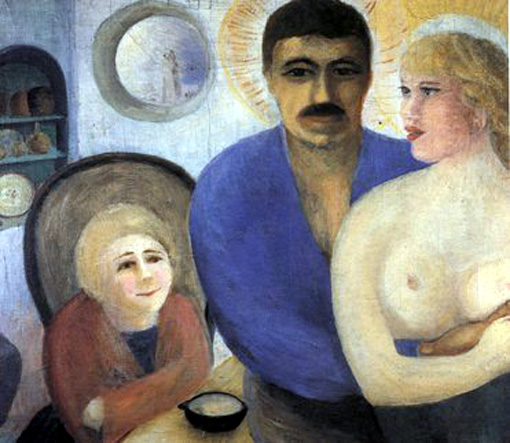On
Most of the paintings showed nude men and women embracing or otherwise communing with themselves and one another in arcadian landscapes of an abstract character. Some were inspired by the Bible, or by ancient mythology. Others were drawn from modern life. Some were comical and burlesque in mood, others melancholic, others ecstatic. The style was energetic, if not terribly assured. Taken together the assembled works amounted to a dream of exuberant but also quaintly innocent carnality, set in a naturist idyll where men and women are free to wander naked in groves of shameless bliss. Lawrence had been writing Lady Chatterley’s Lover at the same time that he painted many of these vigorously naïve paintings and the paradise which many of them body forth strongly recalls the sexual Eden into which the heroine of that novel yearns – futilely, as it turns out – to escape.
What happened next was in fact a farcical reprise of the fate that had befallen Lady Chatterley’s Lover,


